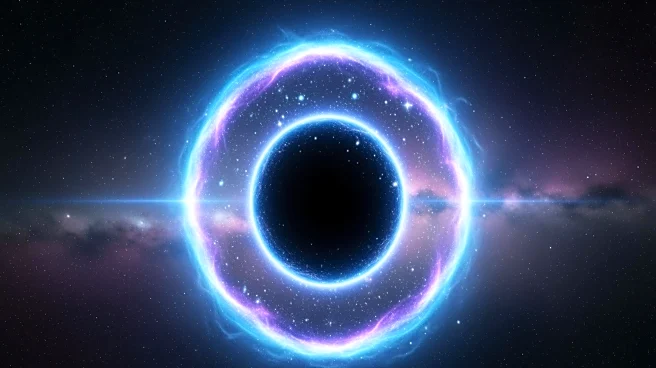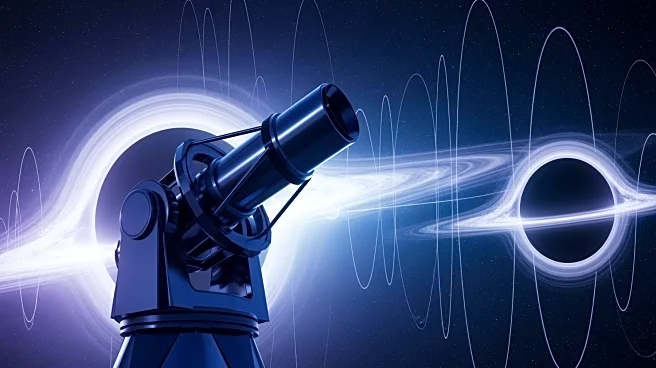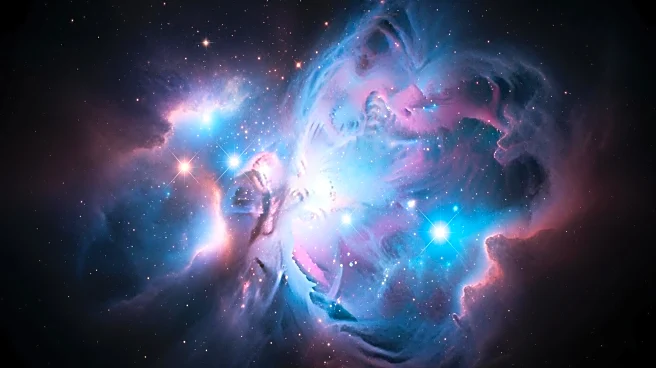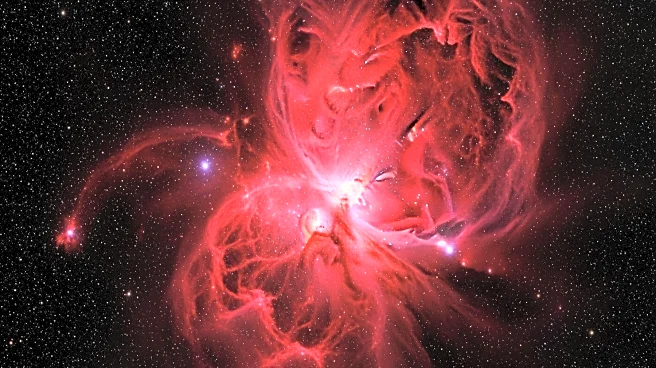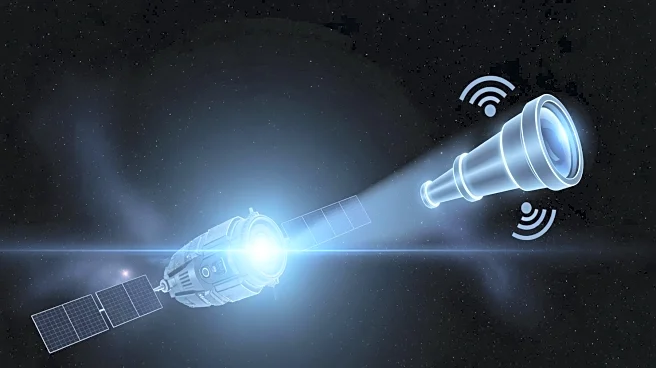What's Happening?
Astronomers may have detected a signal indicative of dark matter in the Milky Way's halo, according to research by Tomonori Totani at the University of Tokyo. Using data from NASA's Fermi Gamma-ray Space Telescope, Totani identified unexplained gamma
ray radiation that could be produced by self-annihilating dark matter particles, known as weakly interacting massive particles (WIMPs). This discovery follows years of debate over similar signals from the galaxy's center, with the current findings offering a promising candidate for dark matter radiation.
Why It's Important?
The potential detection of dark matter is crucial for understanding the universe's composition, as dark matter is believed to constitute 85% of all mass. Identifying dark matter particles would revolutionize physics, providing insights into fundamental forces and the universe's structure. This research could lead to advancements in cosmology and particle physics, impacting scientific theories and models. The findings also underscore the importance of continued investment in space telescopes and international collaboration in astrophysics.
What's Next?
Further investigation is needed to confirm the gamma ray signal as dark matter. Researchers will conduct more sophisticated modeling and examine other radiation sources, such as radio waves and neutrinos, to rule out alternative explanations. Collaboration among astronomers and physicists will be essential to validate these findings and explore their implications. Continued observations and data collection from space telescopes will be critical in advancing our understanding of dark matter.
